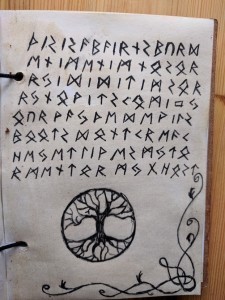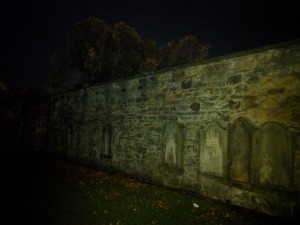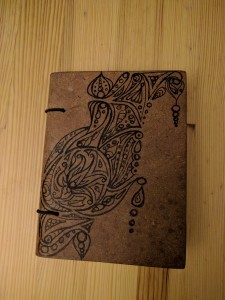@Ver_acity: Behind the Scenes
I’ve decided to start writing a craft blog each month. First up: interactive fiction via Twitter.
Starting October 1 and ending November 1, Emily Still and I wrote an interactive Halloween story on Twitter. We came up with the idea near the end of September while in the pub (where many great ideas start). It was a fun experiment with a form neither of us had written creative in, and we are proud of the story that came out of it. This is a look behind the scenes.
Emily showed me the Dear David threads on Twitter. Basically, a guy may or may not have a haunted apartment, and he’s documenting his findings on Twitter. It’d gone viral. I’m too much of a cynic to think he’s actually being haunted, but the threads were really interesting and engaging. We wanted to do something similar.
Spoilers for the story below, of course.
We did have a Storify of the whole story, but then of course, Storify shut down, which is a shame. It can still all be read via Twitter, though not chronologically.
Ver_acity is the story of a young girl, who calls herself Ver online. I couldn’t remember if we’d come up with her real name, but Emily says we did: Verity. She has just moved to Edinburgh to an old family home. Her mother has died and her father is acting strangely. She’s moody, angry, and probably depressed, though she doesn’t air that on Twitter. She started the account when she blanked for the first time—shifting from our Edinburgh to strange and empty grey copy of it. She wanted to document what’s happening, and she also hoped someone out there would believe her.
First: we did some initial pre-planning. We wanted to focus on witches, and set it in Edinburgh. Emily’s been volunteering for a creative writing group in the Grassmarket, and since the street still has a stone where hangings were held, it was a creepy area to focus on. We started researching witches in Edinburgh, though we wanted the witch subplot to be after the witch trials in the late 1500s. Since we knew the story would be best with some multi-media elements: pictures, videos, outside links, etc.
E says: The Napier course which Laura teaches and I just finished heavily influenced this idea as we talk a lot about using technology to tell stories but also how technology changes our fiction. The story had to fit the medium and that was tricky to plan for.
We decided to do a late-night psychogeography experiment. If you haven’t heard of psychogeography, it’s basically exploring urban environments in a way that jolts you into a new awareness—seeing things as if for the first time, noticing any patterns that emerge, etc. We used to have our students at Napier do them (like Emily, who was my student last year), but due to potential accessibility issues, this year we had students go to a museum to be inspired by an artefact instead.
So, at night, Emily and I met at the hanging stone in Grassmarket and wandered around Edinburgh at night, taking pictures. We went up to Greyfriars and took loads of night-time photos in the cemetery, dodging many, many ghost tours.
E says: The key things we noticed on our psychogeography were the the colour green. It was really all over Edinburgh, graffiti, doorways, bars (like the steel kind but also the pub kind), and doorways. Of course, these do not directly make a story. Instead they weaved in to create our concept and explore our themes.
Of course, after the psychogeography, we went to a pub in the Grassmarket (pubs are a recurring theme…), and we plotted out the story. It was still in its early stages, but we didn’t want to nail down the story completely before starting. We wanted to keep it open enough that if Twitter users responded, we could take it in interesting directions. We had an idea of the main plot and subplots:
Ver seeing strange things in Edinburgh, slipping into an alternate dimension. Her grandmother, a witch, left her a notebook to help her prepare.
We knew who the antagonist and more or less what he’d done.
We’d have her mother being dead and her father acting strangely (to set him up as a red herring)
Ver would have a romance with a girl in school, who ends up being a key player in the plot.
Ver would have a hard time at school, feeling like an outsider.
We set up the Twitter and called for followers on October 1st. We ended up with 135 or so in the end, but we got to 100 within the first week. We didn’t do any other advertising aside from boosting on our own social media. We started drafting and we were off.
 Early on, we have Ver find a notebook in her house among her mother’s things. We wrote a message and considered what code to have it in. We wanted it to be something readers could decipher. We considered constrained language, like missing out certain letters of the alphabet (in retrospect, we could have tried that and removed E for Edward, but we didn’t know his name at that point…!). We played around with alphabet cyphers. In the end, we chose to just translate English into runes. The grandmother, who wrote the notebook, did it so casual eyes couldn’t read what she’d written, but it also meant she was accused of writing a spellbook (which turned out to be true). I stained the page with a teabag to make it look more distressed.
Early on, we have Ver find a notebook in her house among her mother’s things. We wrote a message and considered what code to have it in. We wanted it to be something readers could decipher. We considered constrained language, like missing out certain letters of the alphabet (in retrospect, we could have tried that and removed E for Edward, but we didn’t know his name at that point…!). We played around with alphabet cyphers. In the end, we chose to just translate English into runes. The grandmother, who wrote the notebook, did it so casual eyes couldn’t read what she’d written, but it also meant she was accused of writing a spellbook (which turned out to be true). I stained the page with a teabag to make it look more distressed.
One of the interesting examples of interaction was that Snow, a reader from New Zealand, translated it but had a line in it that said “I’m Enid.” We hadn’t drafted that, but we ran with it and decided to make Enid the grandmother’s name.
One of the other bigger multimedia elements was the Ouija board. It gave Ver and Hel an excuse to meet outside of school and grow closer, and Ouija is a staple of creepy stories. Emily came over and we recorded the videos with the written questions visible. The videos are all silent because we were laughing the whole time. “No, N is down there!” etc. It took many takes, but it was fun. Emily then added a couple of little flourishes, like some static and blanks.
My cats are also in about half of the videos, causing general trouble.
Emily and I drafted together, but posted more or less on separate days, usually some time between 6-8 pm GMT. If I had a few busy evenings, she’d take over, and vice versa. It worked well. We tried to always stay a couple days ahead of drafting, and to keep fleshing out the parts of the story that still needed development.
E says: In terms of story structure knowing we were going from the 1st of October to the 1st of November gave us a clear (more or less) three-acts. We had a turning point or cliffhanger at the end of every week. On Sundays Emily collated a storify so people could catch up with the week all at once if they weren’t able to follow on in real time.
We had a few readers who interacted a lot, and a few that mainly lurked and favourited. We had such a sense of accomplishment on November 1st. I’d never tried writing via Twitter, and it turned out quite creepy in parts despite the word constraint.
E says: It was a really exciting way to put all my new learning into something ‘on the fly’. Working collaboratively with Laura was a privilege – when you are just starting out it’s great to see a pro at work and push yourself to get up to their level. The collaborative process was not just with Laura though, we worked with our readers – sometimes with just seconds to think of a reply in Ver’s register (what gifs would she use?). It certainly raised the bar on my craft.
We put up a kofi here as an optional tip jar. We’d love a few dollars if you enjoyed the story or this behind the scenes look into how we created it. We tend to write in a café/pub that’s easy for us to both get to since we live on opposite sides of town, so help funding the coffee and beer is always appreciated! Thanks for following along, and who knows…maybe Ver will return one day!





